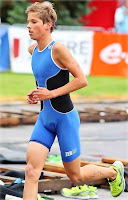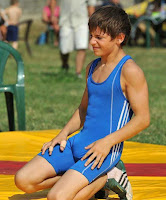Faster, higher, stronger: Doping has been paired with sport for centuries. It was common at the Olympic Games (the historical ones) and formed part of normal preparation. The testing of athletes for forbidden substances, on the other hand, has been done for just over 40 years. As a matter of principle, doping research is always a step behind the cheats as there will always be people who think they are cleverer than the rest of humanity.
The ancient Germans knew all the tricks. It was mushroom extract that kept berserk warriors free of fear and pain. The Norse sagas tell us as much. And the Bible starts human history with the mother of all doping cases: Adam and Eve ate the forbidden fruit to come into divine powers. In South America, Incas chewed coca leaves to mobilize the army, and Chinese generals counted on the herb Ma Huang containing a high concentration of ephedrine to make their armies invincible.
At the Olympic Games of antiquity, no one objected to athletes fortifying themselves artificially. Carmi, the winner of the stadium race in 668 BC, increased his stamina with a special diet of dry figs and moist cheese. This kind of doping would probably not have registered with today's doping controls. But soon, the ancient athletes discovered the performance-enhancing effect of bulls’ testicles. This was the earliest known form of testosterone doping. At the time it might have been more acceptable than in the 20th century when women started competing, too.
Cycling has earned a special place in doping history. Cycling came into full bloom at end of the 19th century. From the beginning, it was more organized cruelty and masochism than sporting rivalry. The first road races went over more than 600 kilometers of unpaved roads. And six-day races really lasted six days, around the clock.
Cyclists and their support teams used any means to survive these ordeals: belladonna, ether, morphine, strychnine, and nitroglycerin. Their water bottles were filled with "Vin Mariani": wine mixed with extract of coca. It will surprise no one that the first recorded fatality of doping history occurred in a long distance cycling race. It happened at the 24-hour race of the Bol d'Or in 1886: Welshman Arthur Linton died of an overdose of "trimethyl" - whatever that may have been. The story might be apocryphal.
At that time, no one was bothered by doping and no one was ashamed of it. At the Olympic Games of 1904 in St. Louis, the winner of the marathon Thomas Hicks strengthened himself during the race several times with a cocktail of brandy and strychnine. After the race he collapsed, surprisingly. Austrian Nobel Laureate for Chemistry Fritz Pregl and physiologist Oskar Zoth made self-tests to determine the performance-enhancing effect of animal testicular extracts. This was the rediscovery of ancient testosterone doping with bulls’ testicles.
In the Second World War, pharmacists learned to artificially produce synthetic derivatives of testosterone: anabolic steroids. At first, they served to nourish and rehabilitate exhausted prisoners of war. Soon, athletes discovered the products that became known as "Breakfast for Champions". And they were not limited to human champions. In 1941, the American racehorse Holloway won race after race after a virtual testosterone orgy.
After the muscles, it was the turn of the brain enhancing drugs. First, generals and soldiers in World War II used the stimulating effect of amphetamines; then athletes resorted to these little helpers. At the forefront we find the cyclists, again. Footage of cycle races in the sixties and seventies show the drivers visibly in the grip of a chemical kick. In 1967, the English Tour de France participant Tom Simpson died at Mont Ventoux of methamphetamine poisoning. It was the first televised death due to doping. Like testosterone and amphetamine, heroin found its way from soldiers to athletes. In 1968, the runner Dick Howard died of it. And the stimulant Modafinil took the same way again and was found in the 2000s in any number of American athletes.
The Cold War, however, became the father of anti-doping. In the Summer Games of 1952 in Helsinki, the athletes of the Soviet Union made their Olympic debut and won incredible 71 medals. East German scientists had begun using drugs professionally in sport, and the Soviets enlarged it to a country wide government project. At that point, it dawned on the West that doping could damage the sport or at least American financial interests therein.
The International Association of Athletics Federations (IAAF) had made doping illegal in 1928. But it was 40 years later, at the Olympic Games of 1968 in Mexico, that the first doping tests were run. The arms race of doping agency against the dopers began. The dopers had more than two millennia advantage; it is what you might call a real handicap for the testing setup. It is only natural, therefore, that testing kits are constantly lagging behind the newest and most ingenious of doping tricksters.
Recently, pharmaceutical giant Roche has become most unsporting. The pharmaceutical company actually delivered the testing kits for products to the doping agencies at the same time as the products hit the shelves. It’s most unsporting behavior. How should any decent doper survive if someone cheats like that?
Was doping done for sporting greatness? The reality is, winners of the ancient Olympic Games were heroes in their home cities and became instantly rich through perks and government grants. Today, it is winners' premiums and product endorsements that oils the machinery of artificial enhancement. Nothing much has changed in the sporting world in 3,000 years.
Further reading:
Take A Ride
Who Put Borussia in Football?
FC Barcelona and a Question of Colors
Reference: Article ‘Geschichte des Dopings’; Author ‘Kerstin Eva Dreher’; Publisher ‘Planet Wissen’; Published ‘Berlin, September 2010’.
Further reading:
Take A Ride
Who Put Borussia in Football?
FC Barcelona and a Question of Colors
Reference: Article ‘Geschichte des Dopings’; Author ‘Kerstin Eva Dreher’; Publisher ‘Planet Wissen’; Published ‘Berlin, September 2010’.











ho.
ReplyDelete